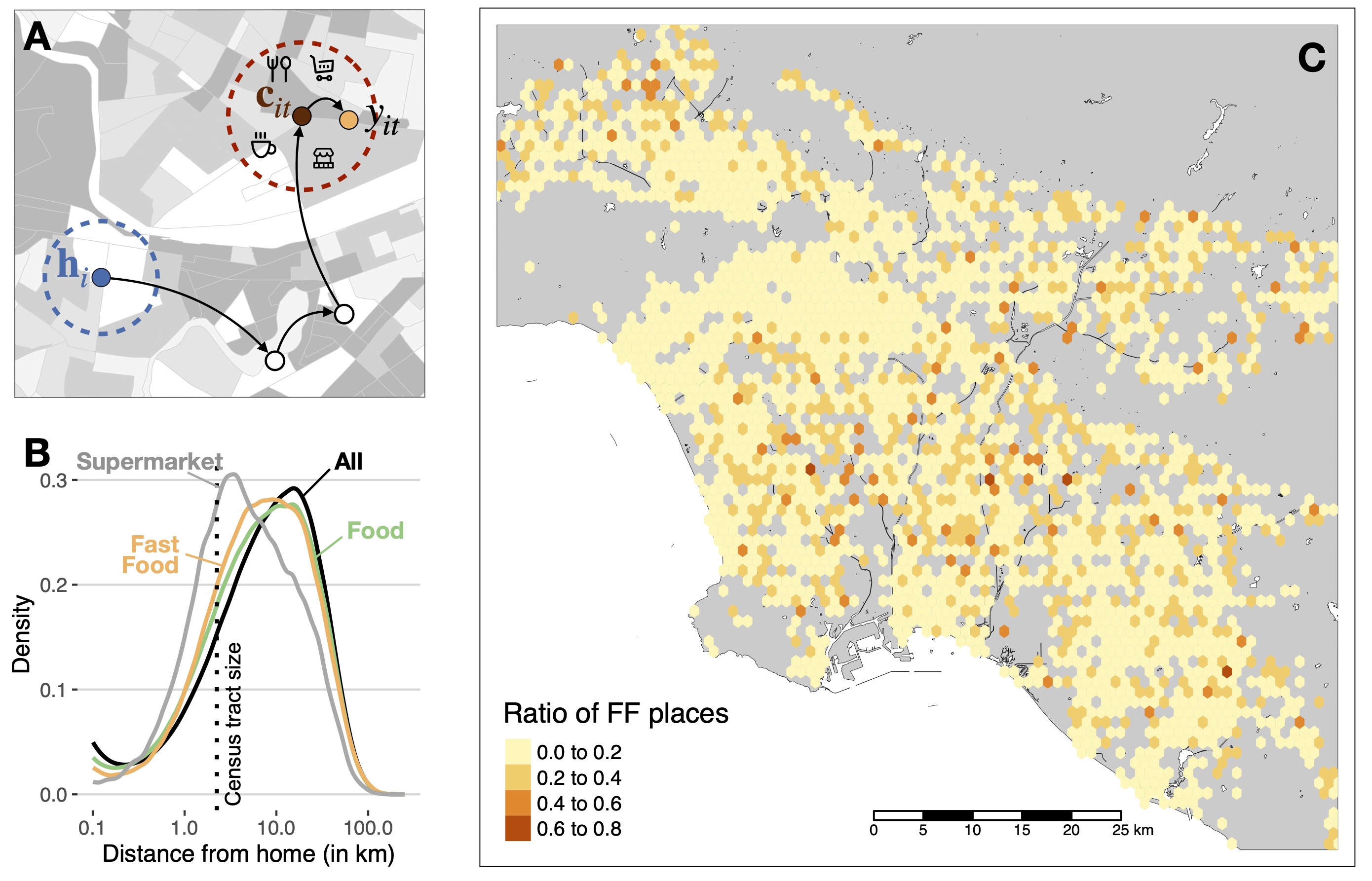
Our behavior conditions our health. Exposure to infections depends on our and other people’s mobility. Exposure to healthy environments or habits depends on our choices and opportunities. Although human behavior is highly adaptive and dynamic, most social determinants of health are restricted to static aggregated representations of socio-demographic groups or residential environments.
We have started a program to understand behavioral-network determinants of health outcomes by modeling physical exposure between people and environments using large datasets of human mobility and activity and multilayer networks. For example, using mobility data and state-of-the-art epidemiological models, we built high-resolution temporal contact networks at the population scale. Having a direct link to human behavior allowed us to model and predict potential behavioral interventions (closing of venues, re-opening, quarantine, contact tracing) or the role of super-spreading events and settings in the propagation of the virus , or even analyze future trade-offs between the epidemic and economic dimensions of the pandemic. People’s movements also condition the food environments they are exposed to, impacting their diet and related disease. Most of the focus has been on static food environments around the home, such as food deserts. We use large datasets of human mobility and causal techniques to detect the food environments people are exposed to and food outlets they visit as they move through the day and study the time-dependent effect of food environments on more healthy dietary choices. By incorporating the intertwined effect between mobility, human behavior, and exposure to food environments, we can build more efficient interventions to promote healthier options and diets.